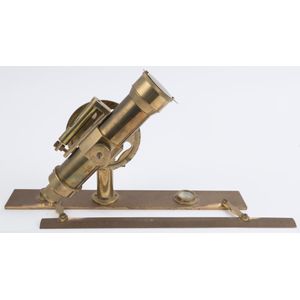
Brass Plane Table Alidade with Compass Base and Ruler
A solid brass plane table Alidade with directional ruler and built-in compass base, 35 cm wide
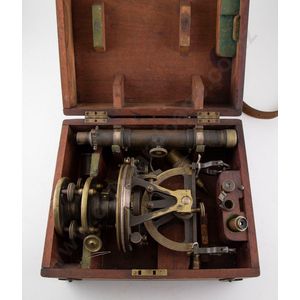
Troughton & Simms Theodolite with Accessories and Case
Troughton & Simms theodolite horizontal full circle with magnifiers, telescope with bubble levels, makers name on compass card and tripod, the mahogany case with leather belt straps containing a bolt & Sutherland surveyors steel band on brass spool serial…
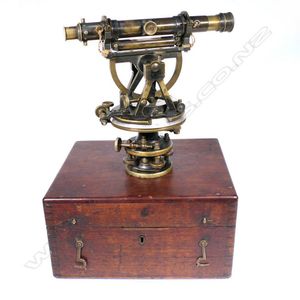
Victorian Brass Theodolite by Troughton & Simms, 1867
A good Victorian cased brass theodolite by Troughton & Simms of London, with telescopic site fitting to the top above the named compass dial framed by two levels and silvered scale. The original brass fitted mahogany case labeled 'made May 1867'
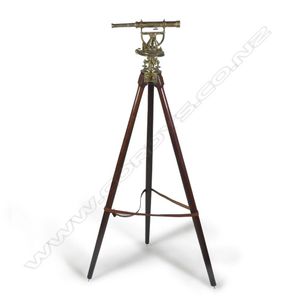
Antique Brass Theodolite with Mahogany Tripod Legs
A 19th century brass theodolite by Watkins & hill, with silvered scales, maker's details on compass table, with original mahogany tripod legs. Height 152 cm
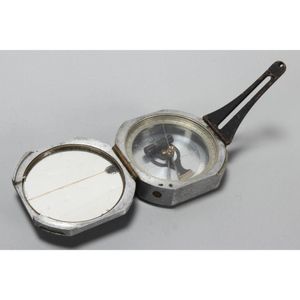
Rare Ainsworth Pocket Transit Compass with Leather Case
Rare American D.W Bruntons, Ainsworth pocket Transit compass, made for surveying on or under the ground, incised D. W. Brunton's Pat. Sept. 18, 1894 Apr. 14, 1914 Wm. Ainsworth & Sons Sole Manufacturers Pat. Oct. 2 12. May 27. 13. Denver, Colo. U. S. A.,…

Surveyor's Compass with Leather Case, 11.5 cm Diameter
A surveyors compass in leather carry case N.H Seward Pty Ltd Melbourne 11.5 cm diameter

English Altitude Theodolite by William Wilton (1830)
An English Altitude Theodolite, William Wilton, Cornwall, circa 1830, circular plate with extended arms to carry open sights, in the centre is a silvered compass, underneath a glazed case, flanked by two spirit levels and a scale divided into quadrants of…

Vintage Stanley Brass Clinometer Compass
A vintage Stanley brass miners or Clinometer compass. in solid brass with a mirror, spirit level and slit sighting mirror. Diameter 8 cm

Portable Theodolite with Compass Plate, 1918
B J Hall, London, extra portable theodolite no. 202 1918 on compass plate, brass and japanned

London Dumpy Level with Compass Base (Damaged Glass)
Stanley, London dumpy level on compass base no. 7758 all brass (compass glass damaged)
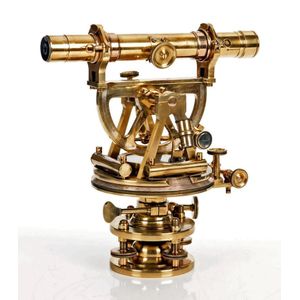
Victorian Surveyor's Theodolite in Glass Case
A fine brass Victorian surveyors theodolite with silvered compass and a vernier scale by Troughton & Sims in a glass and oak framed case. Height 40 cm. Length 37 cm
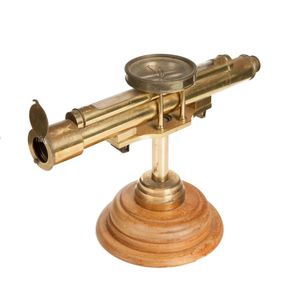
Antique English Mining Dial with Compass and Stand
A late 19th century gilt brass English mining dial with telescopic level and compass by Throughton & Sims, London mounted on a swivel base with turned oak stand. Length 34 cm

 Loading more...
Loading more...